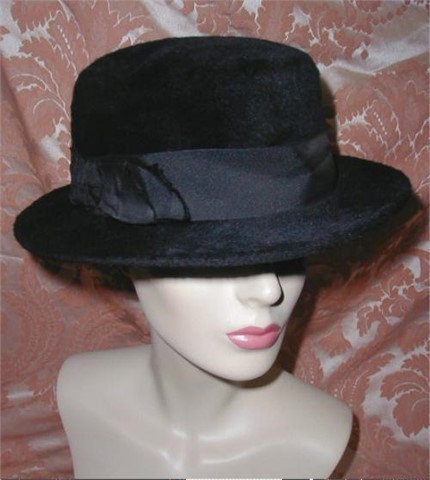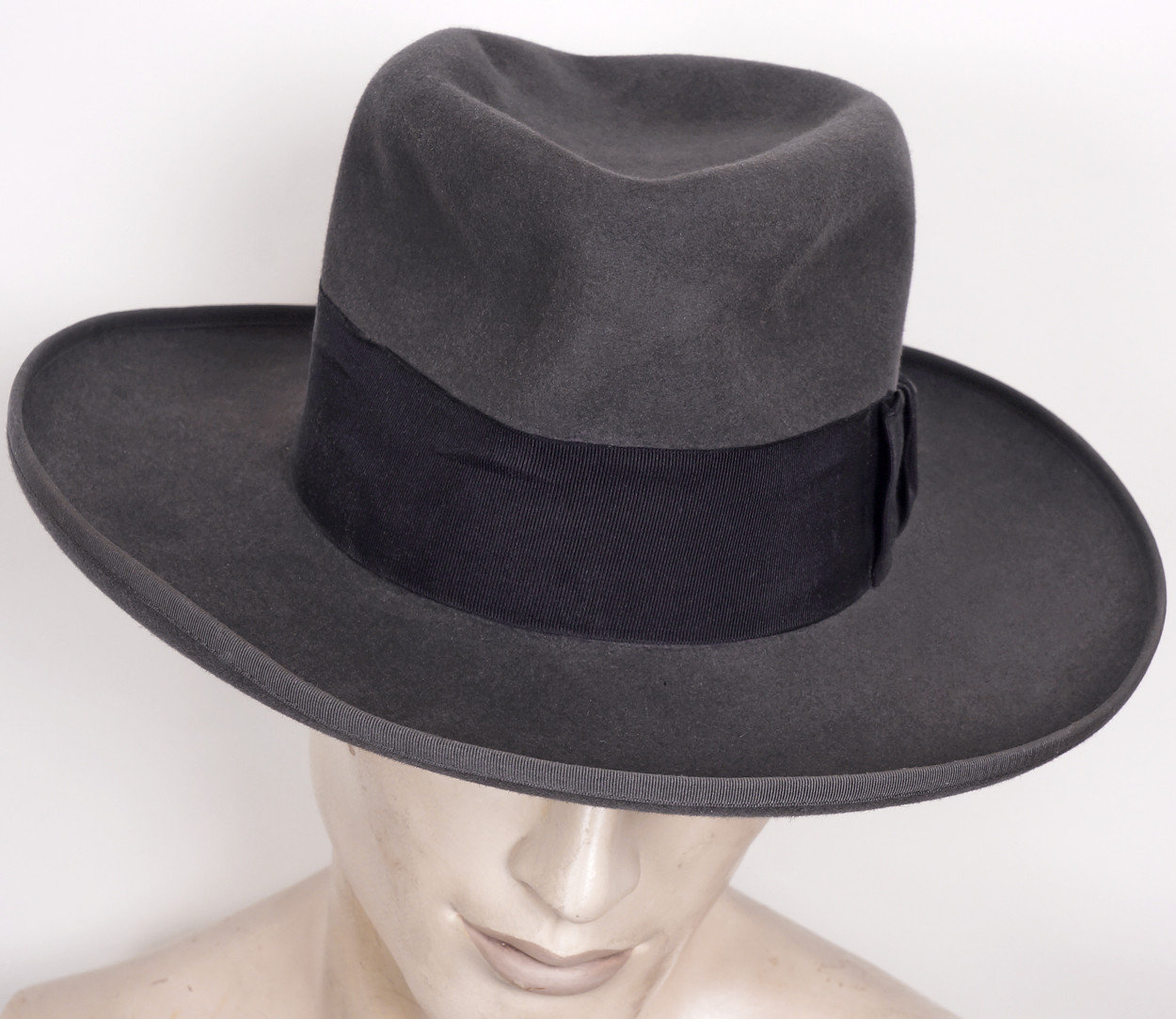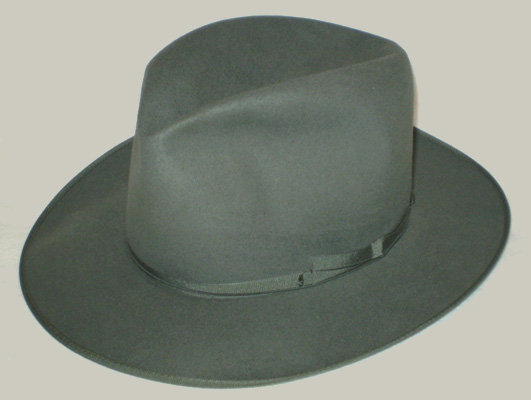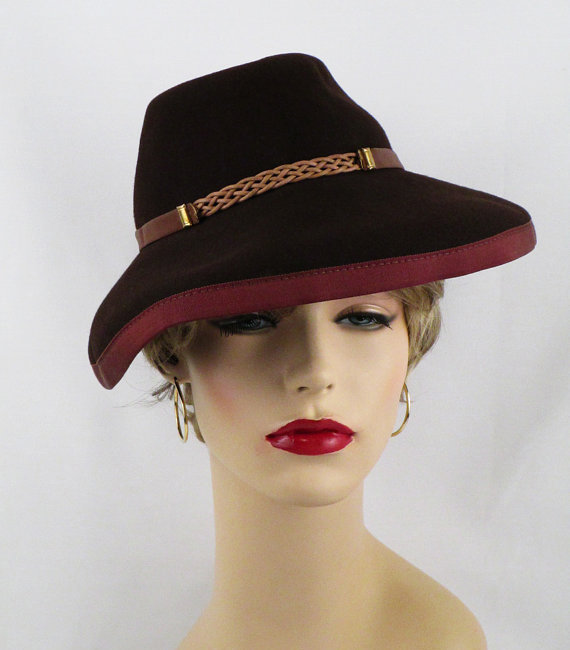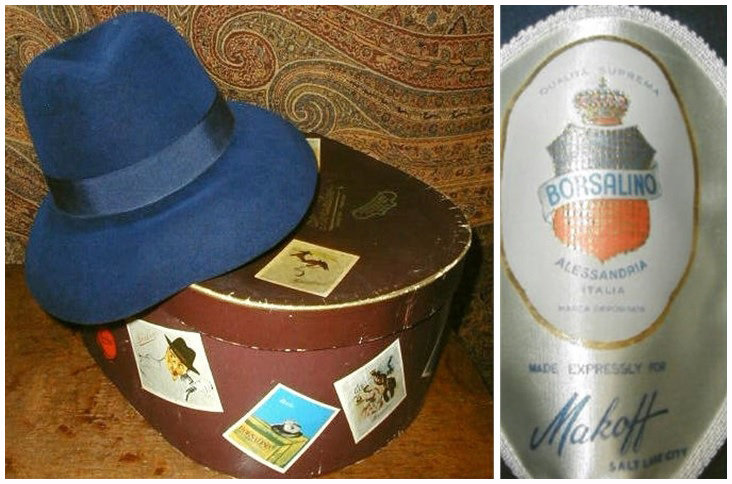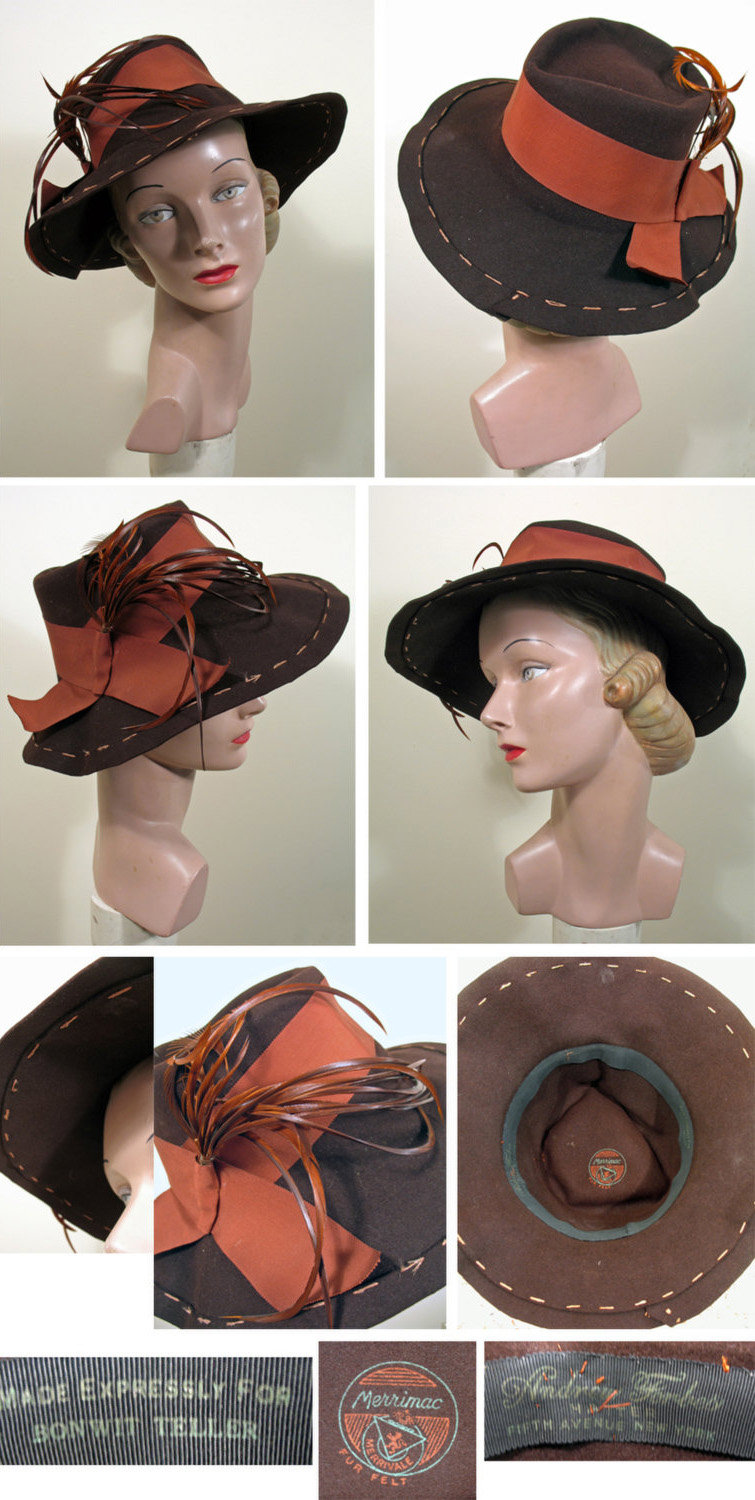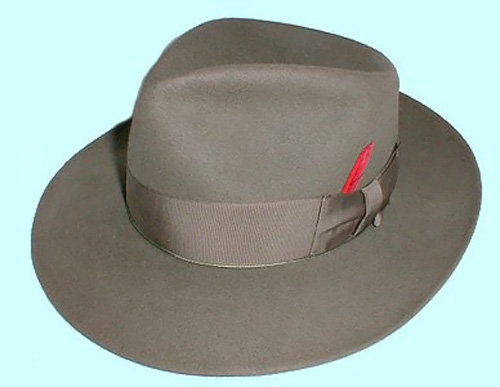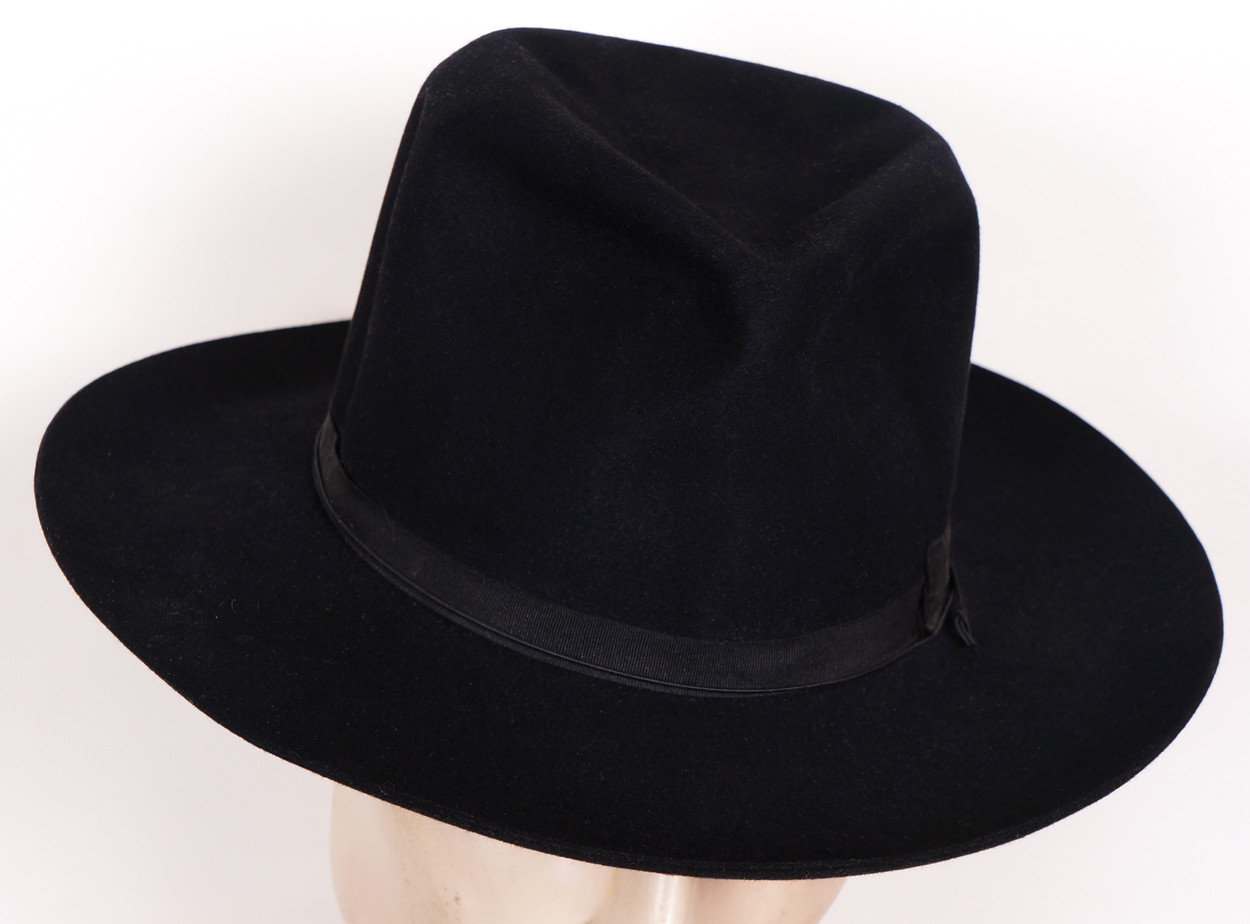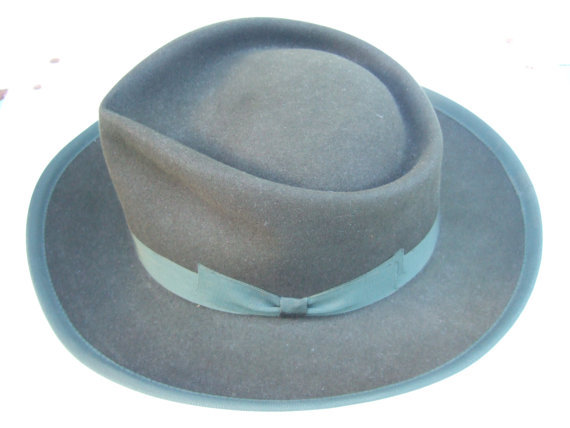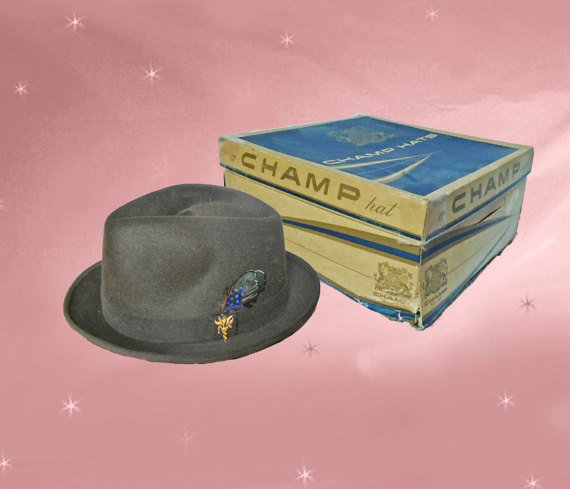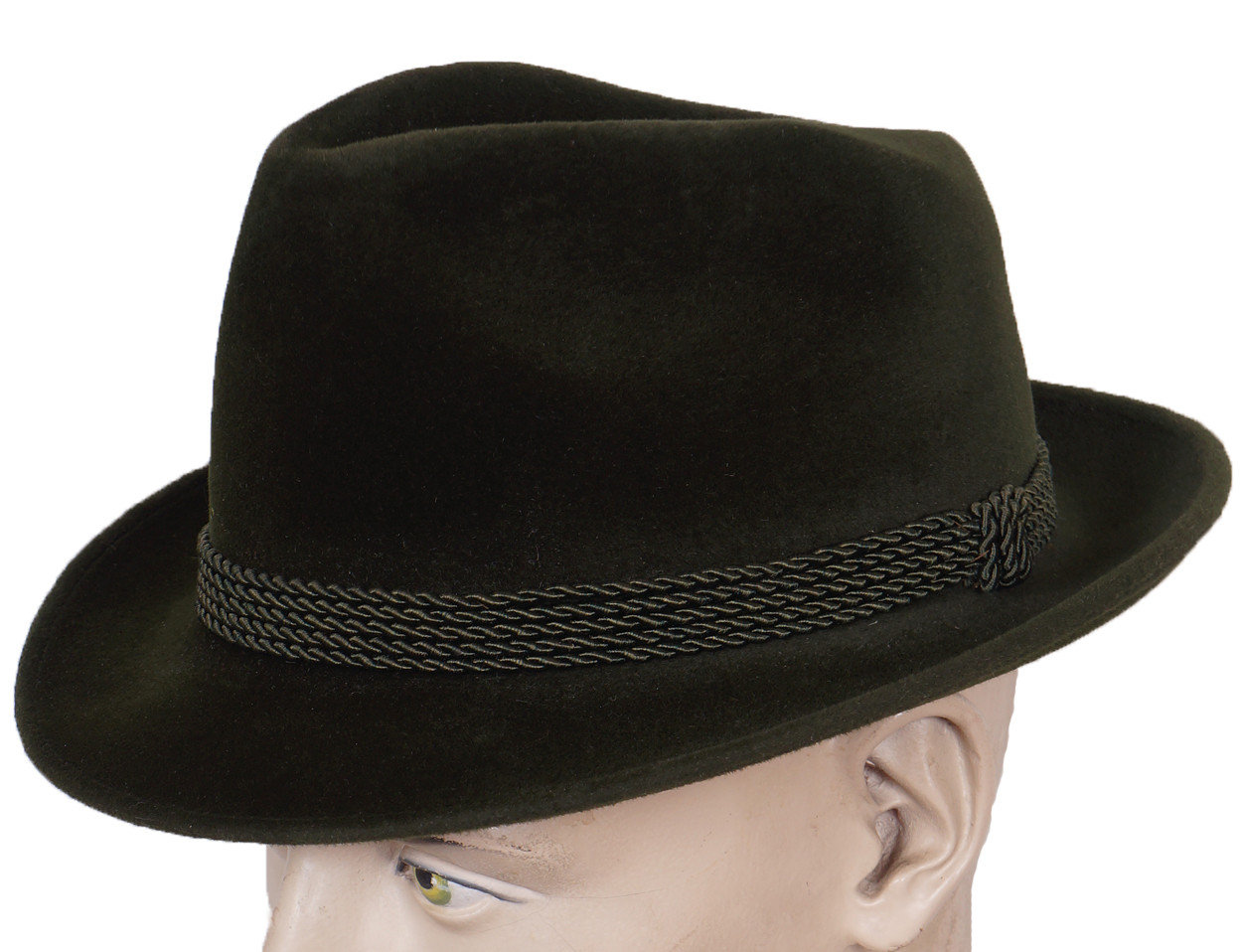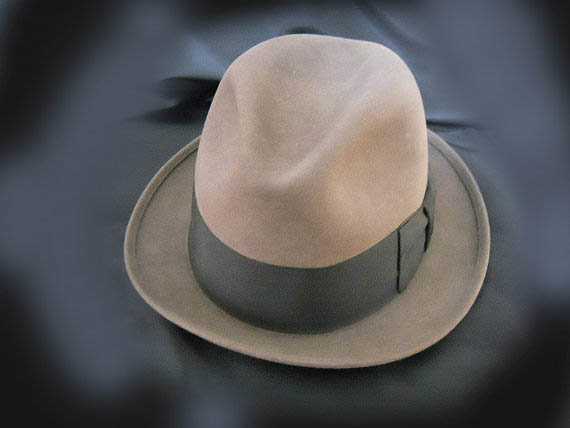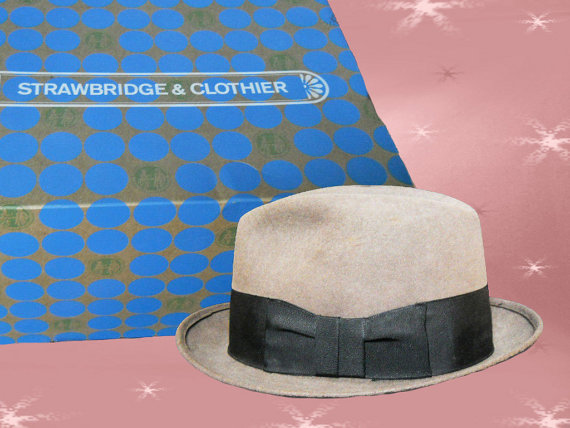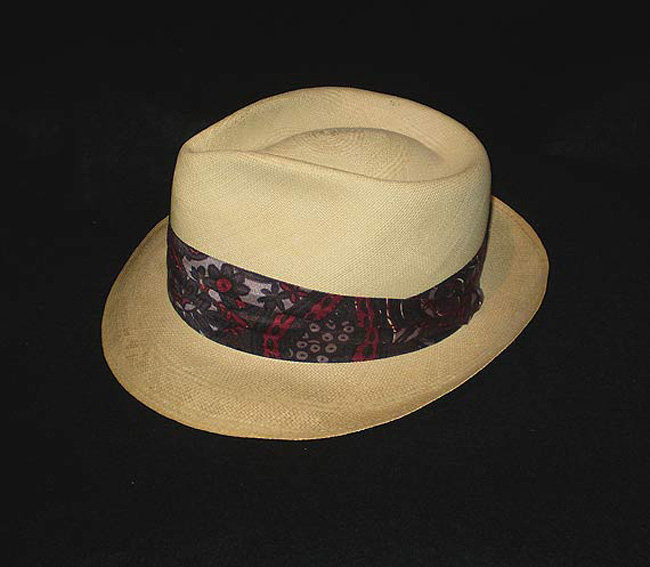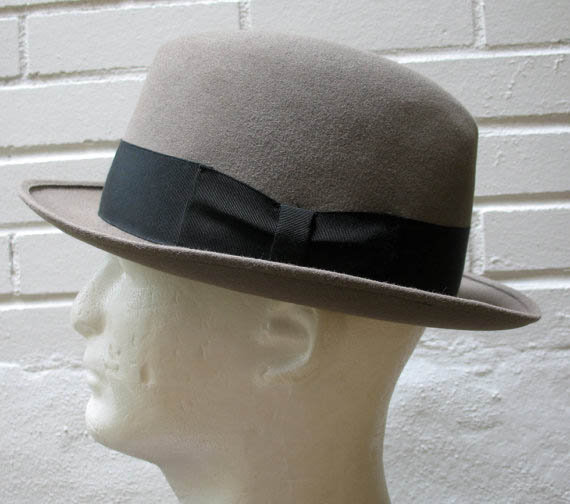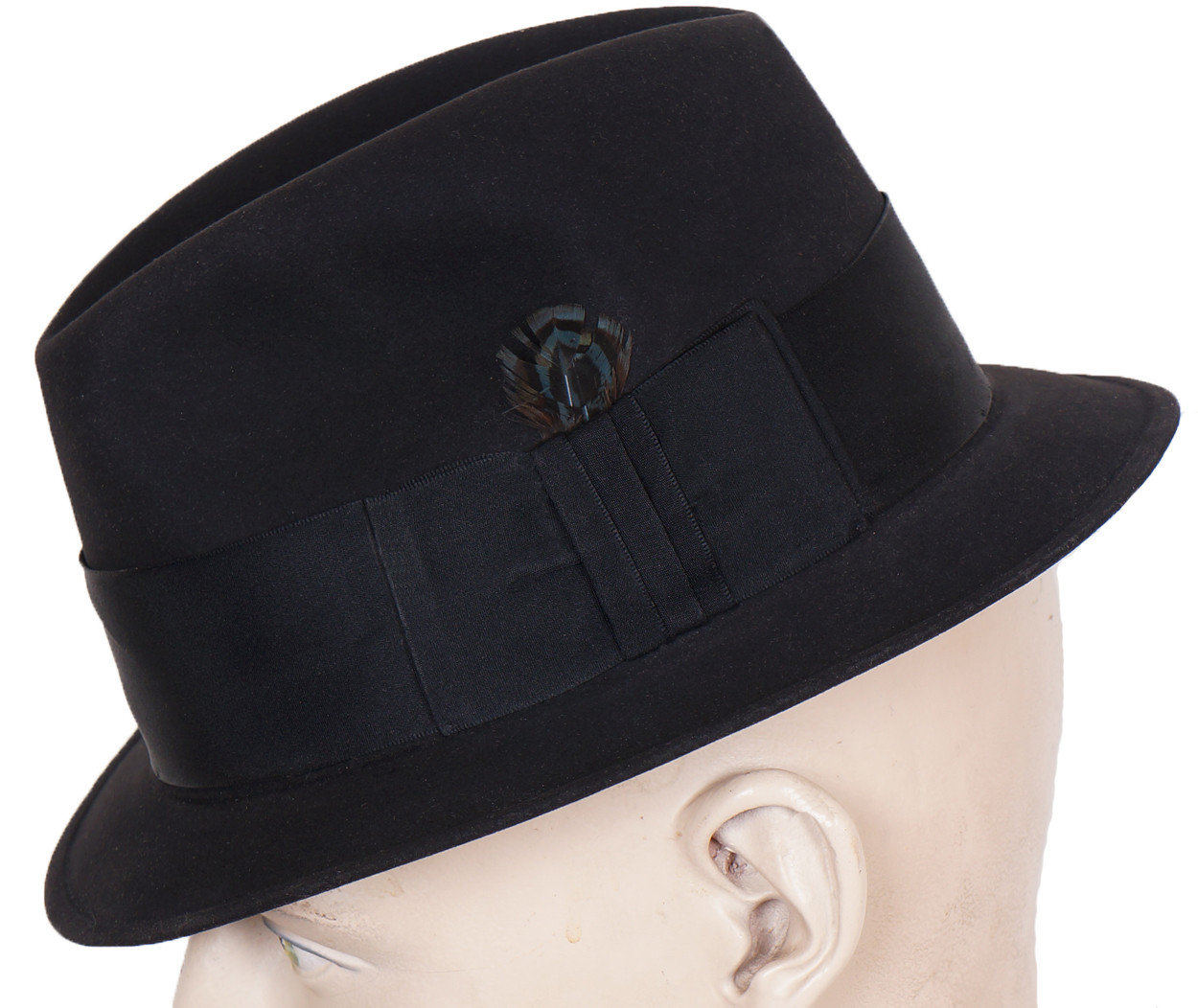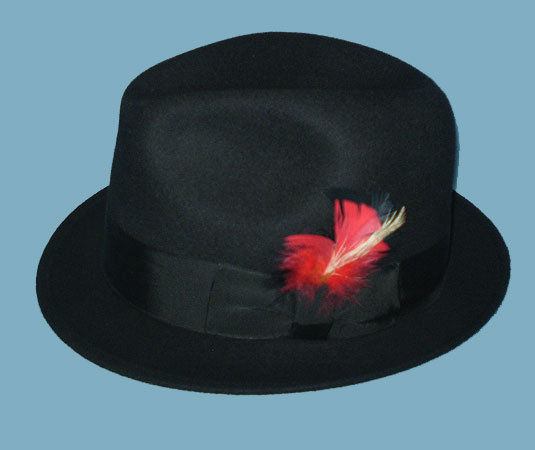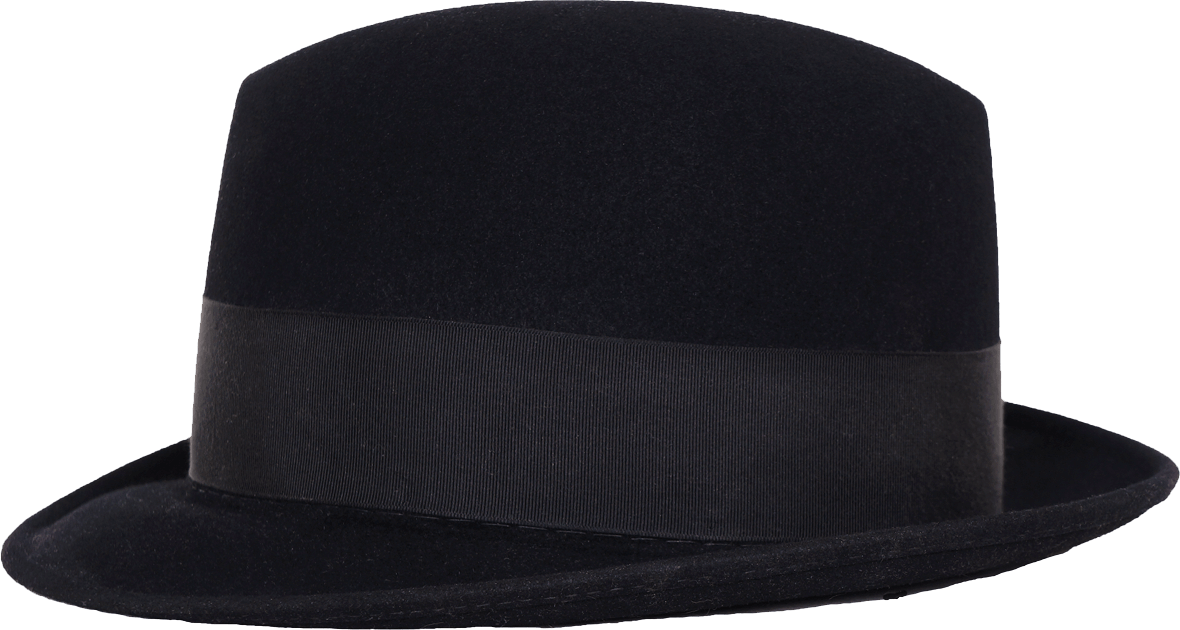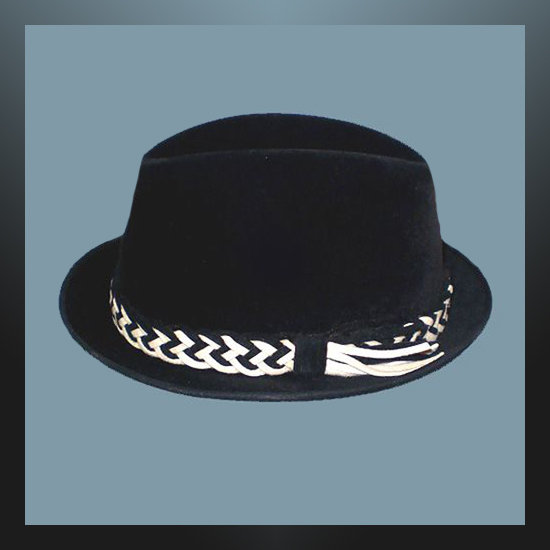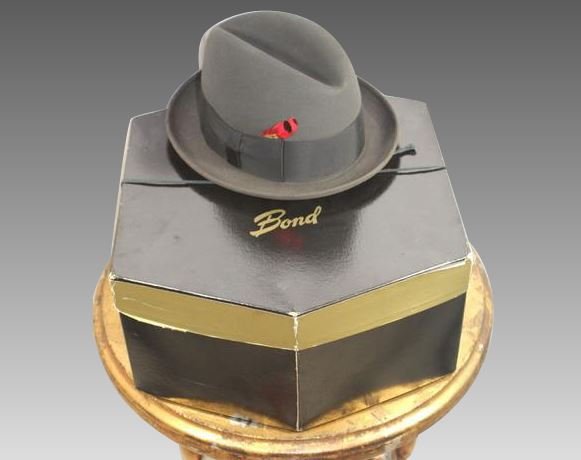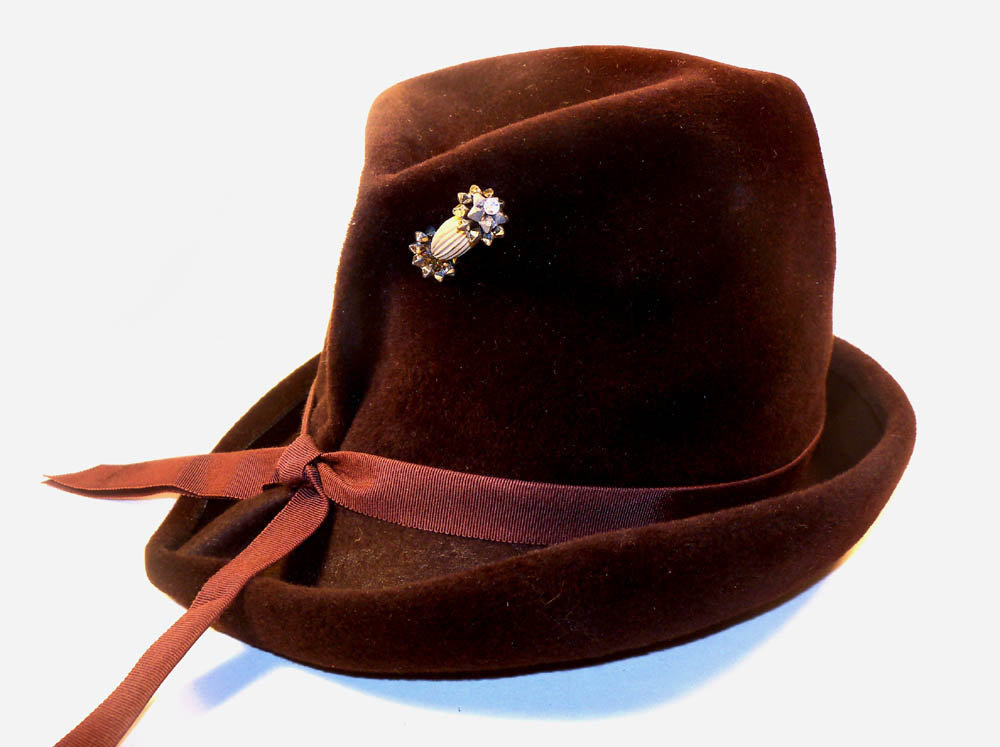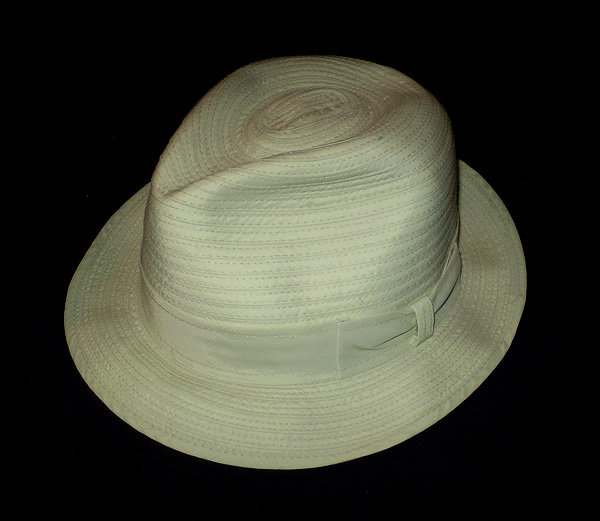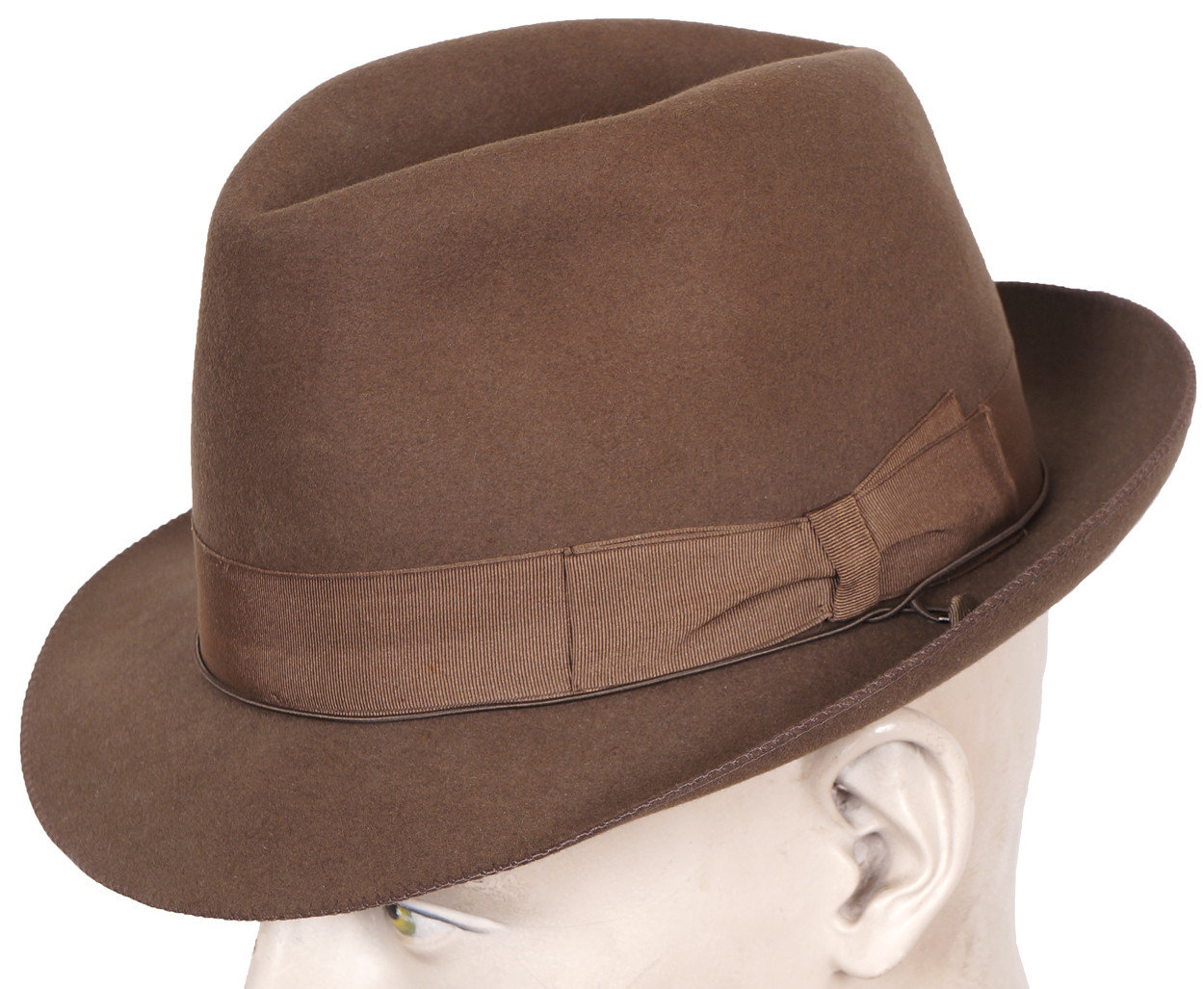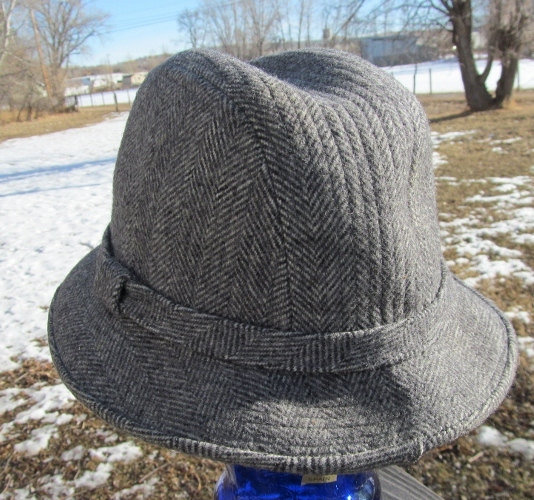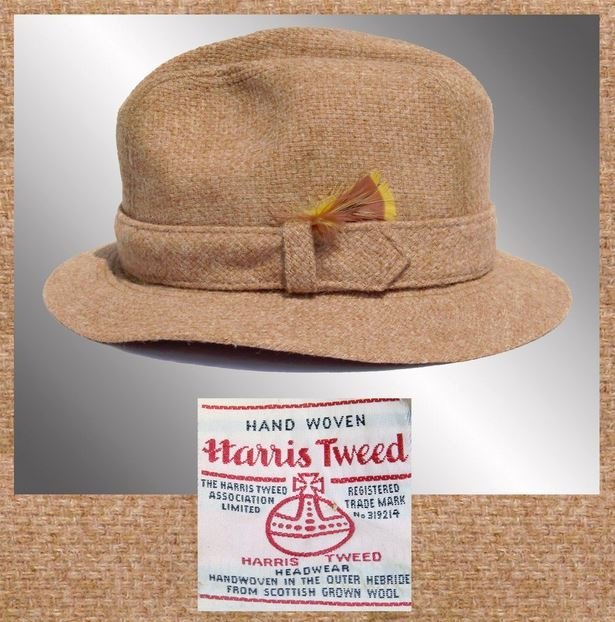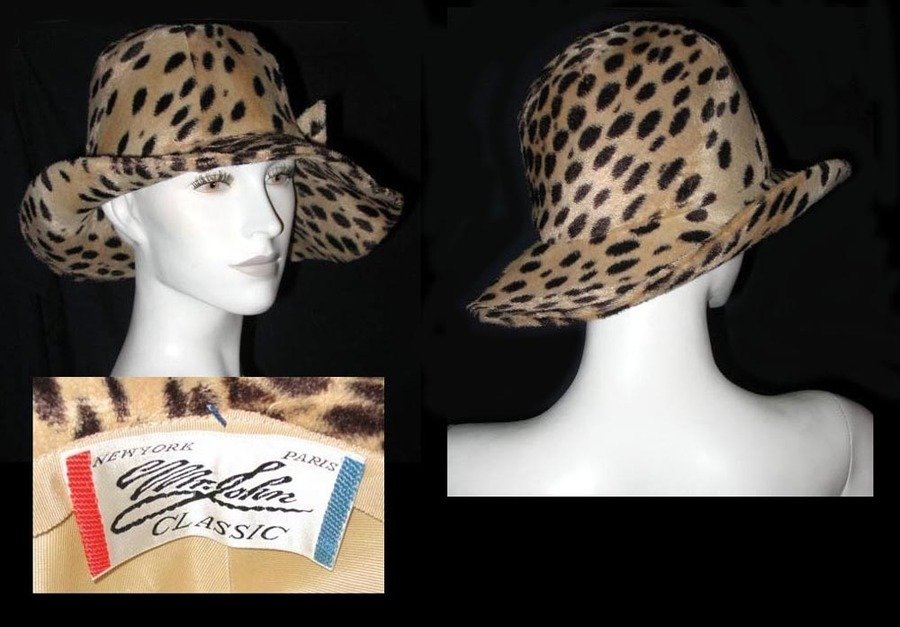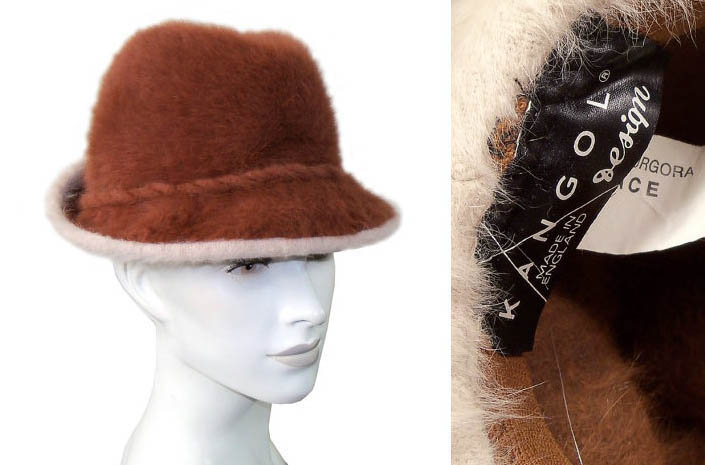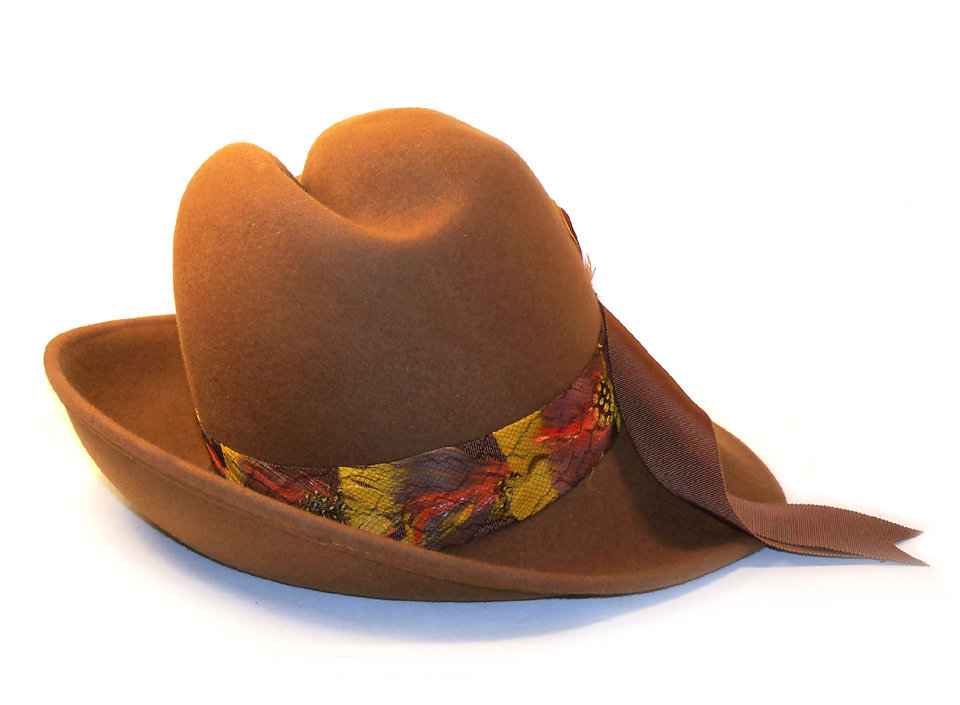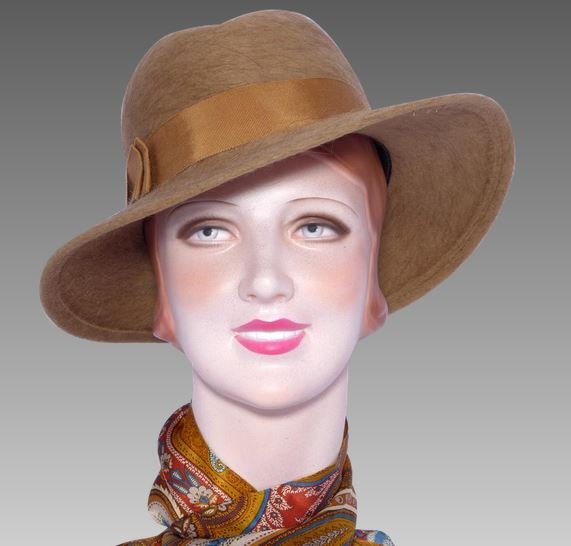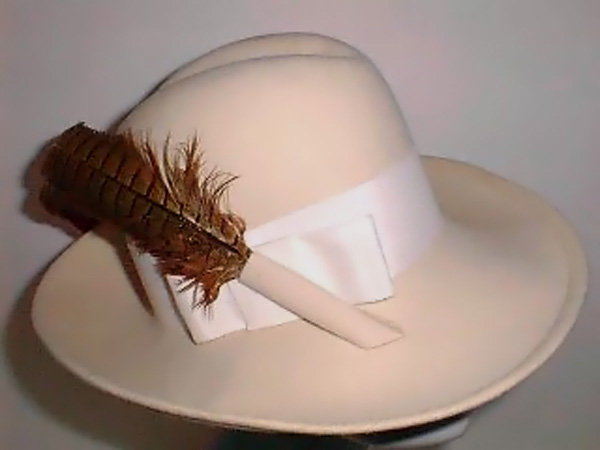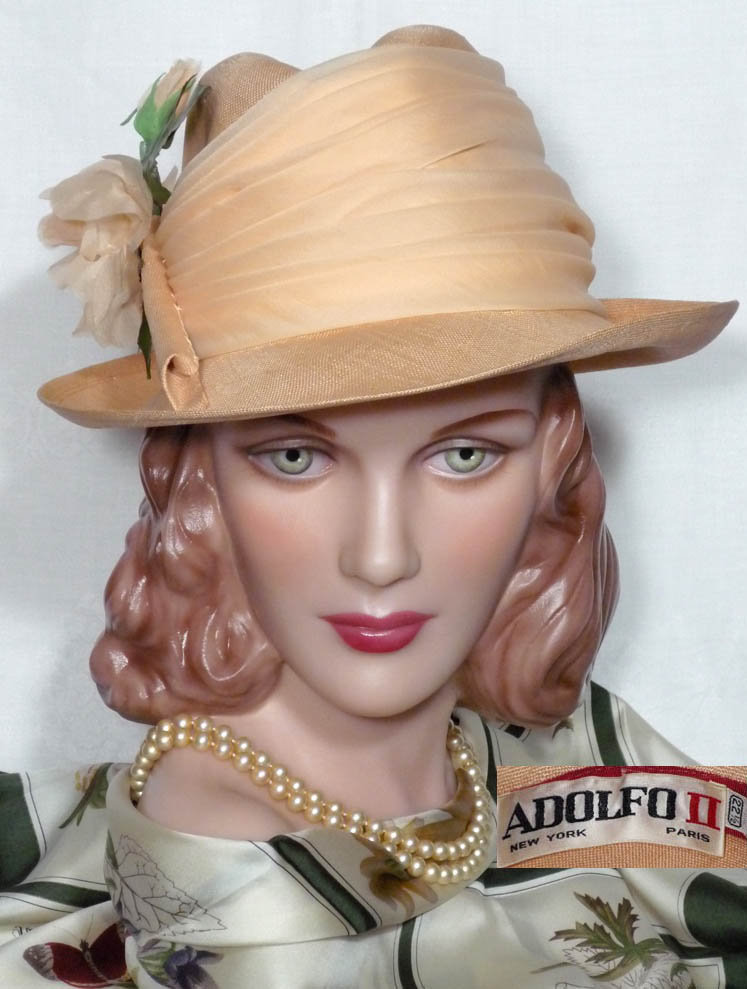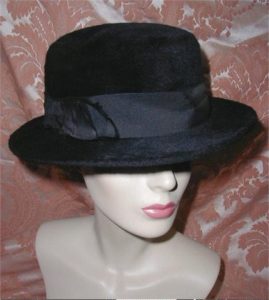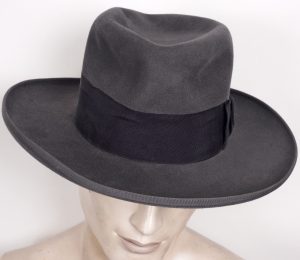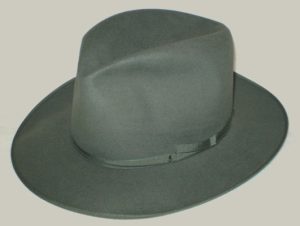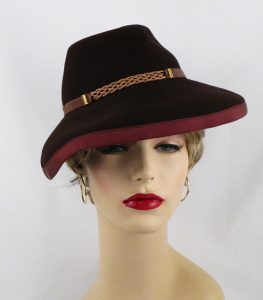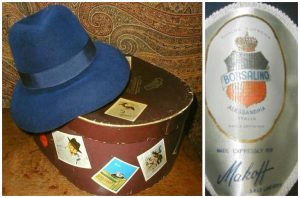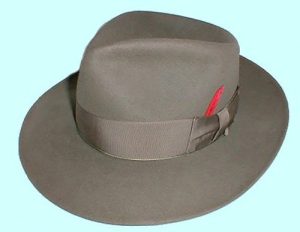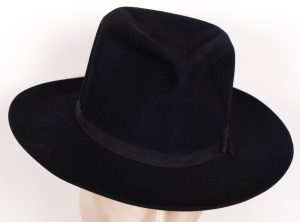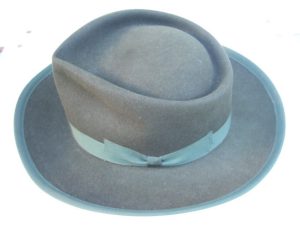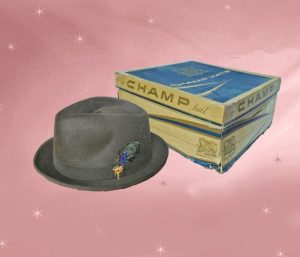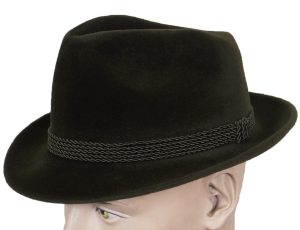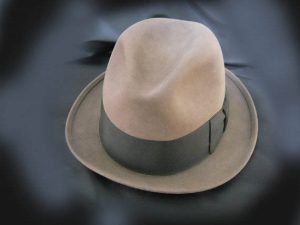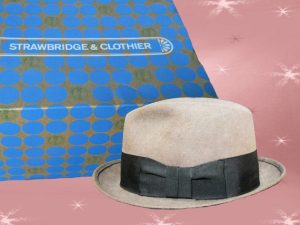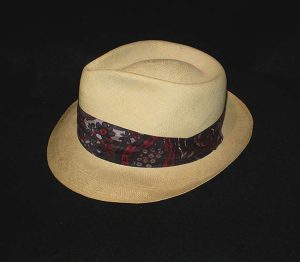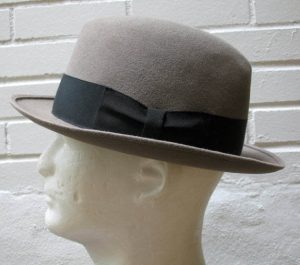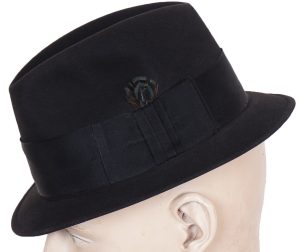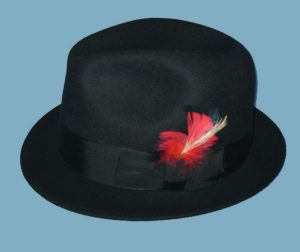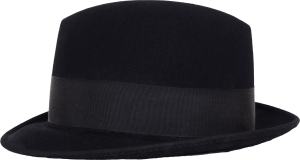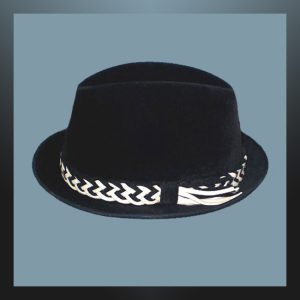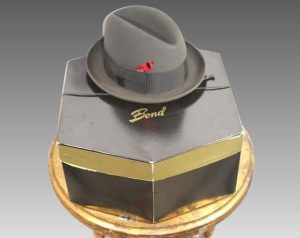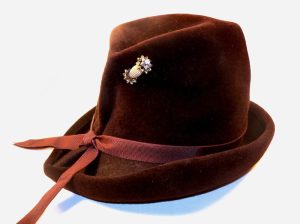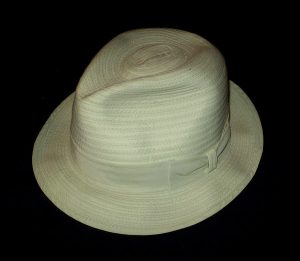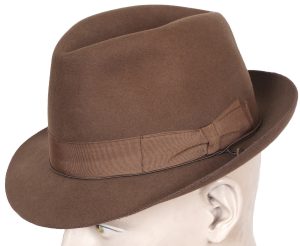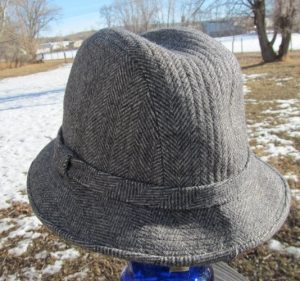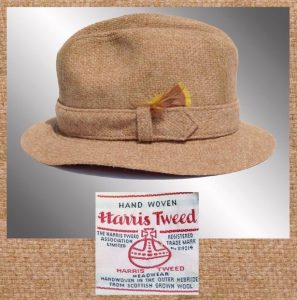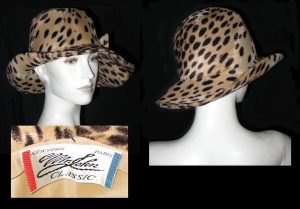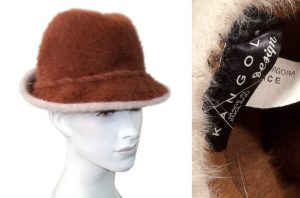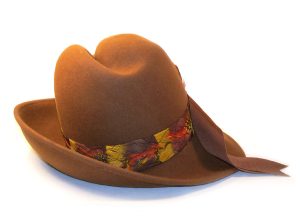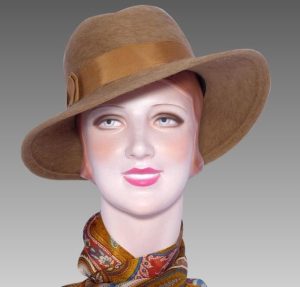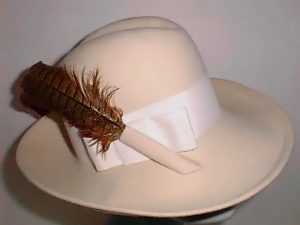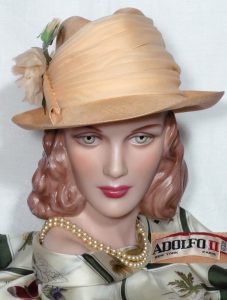The fedora hat is generally made of soft beaver, rabbit, and/or wool felt, with smooth, brushed, velour, and/or longhair textures. It has a low-to-medium height crown with a length-wise or teardrop/diamond-shaped crease running along the crown’s top from front to back; a short, medium, or wide turned-up or turned-down brim; and the crown is usually ringed with a ribbon – often grosgrain with a flattened bow on the crown’s side.
The fedora is named after the 1882 play Fedora by Victor Sardou in which actress Sarah Bernhardt donned a soft felt hat to play the role of a Russian princess dressed like a boy. Contrary to popular lore, the play did not launch the fad of women wearing fedoras, but rather the hat was immediately marketed to and worn by men with its popularity slowly increasing from the 1880s through the 1910s.
The fedora’s prominence skyrocketed in the 1920s and 1930s, when it was worn by such actors as John Gilbert, William Powell, and Humphrey Bogart in popular Hollywood films. The fedora continued to be popular during the 1940s with support from gangster and Noir films – you simply couldn’t think of a gangster without imagining a fedora on his head!
During the 1950s and 1960s the fedora managed to maintain a menswear fashion presence, albeit an increasingly small one due to changing styles and times. By the early 1970s, as informal clothing became more acceptable and even popular, the fedora went out of fashion for most men, but enjoyed new popularity as womenswear with famous faces such as Lauren Hutton popularizing the look for ladies.
The list of famous fedora wearers is long and varied and includes everyone from gangsters, actors, and musicians to coaches, politicians, and even government employees. The fedora hat is a classic – both timeless and practical – and while other styles have come and gone, the fedora never truly goes out of style.
Written by JauntyRooster
